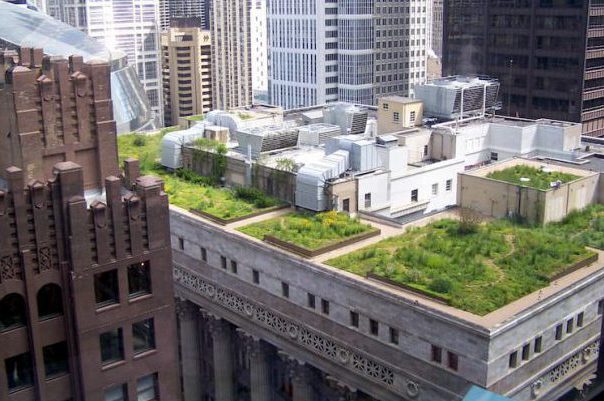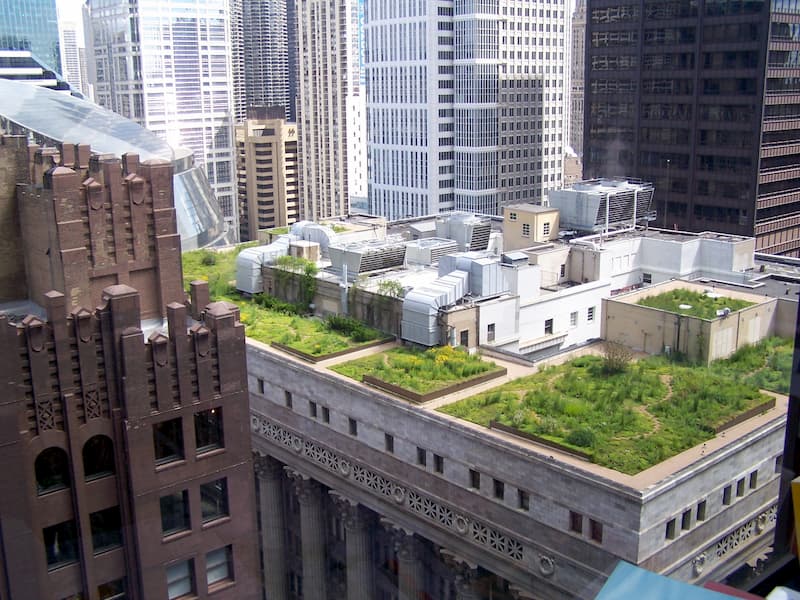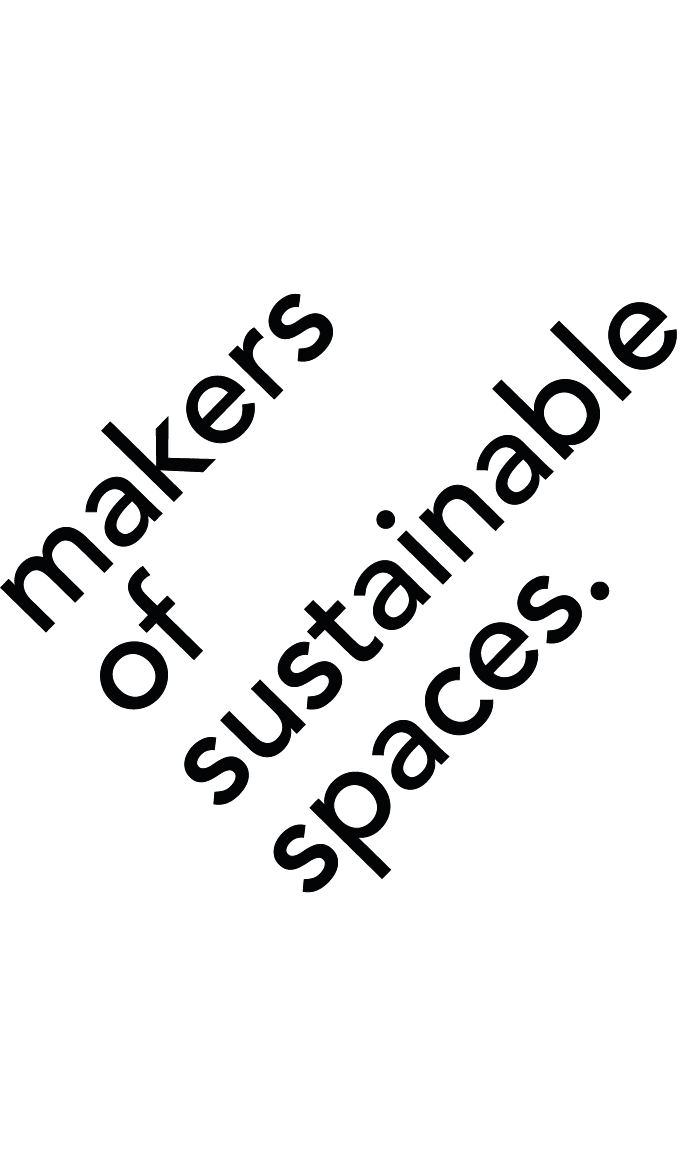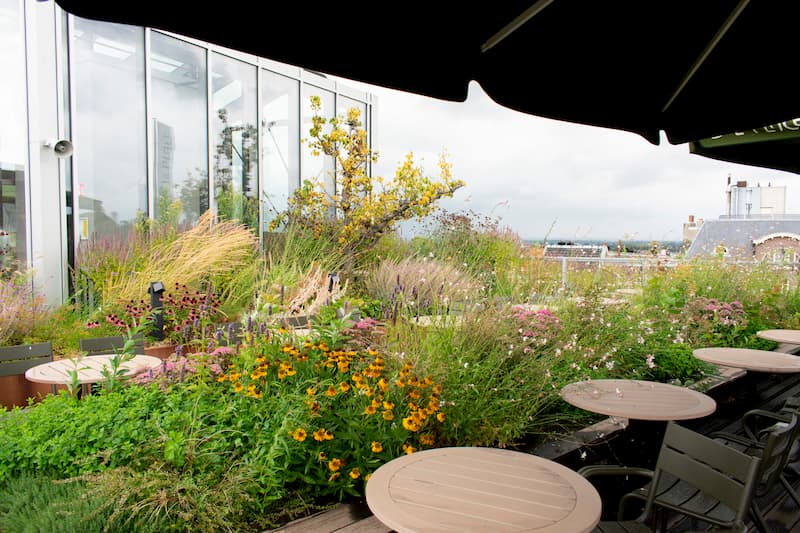

09 Aug Including Nature for a Finer Urban Future
by Hanne Sinninghe
What is the effect of (the lack of) green on a city? UHI, water, and biodiversity are all big players in the world of nature inclusive design. The next coming months we will address different subjects that are important to take into account on our journey to a greener urban environment. Here’s a short summary of what to expect.
More often we are confronted with extreme weather. Summers are hotter and winters are wetter. Next to that, cities are more dense everyday. During the last centuries green has drastically made way for concrete and now we feel the effects. This forces us to take a closer look at whatever it is that is threatening us so we can seek solutions: Nature. It’s time we start incorporating nature inclusive designs!
Image : A biodiverse roof designed by MOSS on the roof of La Place in Nijmegen is teeming with color and habitats for local biodiversity.
A nature inclusive way of building has a strong impact for the wellbeing of people and animals in a city. Adding a small green strip in a grey street may seem like a small gesture, but the consequences are enormous. Plants growing on this strip improve the air quality and their roots absorb great amounts of water during long and intensive rainfalls. Water that would otherwise flow directly to the sewers which, in extreme weather can’t take the pressure and will overflow. Bees and butterflies will be attracted by the flowers growing on the green patch, which in their turn pollinate the plants making sure fruits and vegetables will grow.
The little ecosystem formed by all the insects and worms living in the soil will attract birds which in their turn will spread plants seedlings all across town, enhancing the biodiversity throughout bigger area’s. All this life happens under our nose, as we enjoy the colors and smells of the beautiful flowers. Adding a green strip also has a cooling effect when the soil has absorbed all that rainwater. Our wellbeing, happiness and productivity will increase when living in a more green city.
Add not just one, but hundreds of these small green patches across the city and the effect will increase drastically. Now take it up the roof and create a giant ‘Biodiversity Highway’ full of life that will regulate warmth and water in a city that’s in need of a change.
URBAN HEAT ISLAND EFFECT (UHI)
This phenomena is world wide literally a ‘hot-topic’. The difference in warmth between cities and the countryside during hot days can get up to 4°C. This difference increases the risk of heatwaves and heat distress in cities drastically. Heat distress can cause more aggression and can lower the moral and productivity. Research has also shown that roofs and pavements last shorter because of longer exposure to sunlight.
The most important causes of UHI are:
Absorption of sunlight by the dark matter that is covering the surface of the city (think of pavement, concrete facades, bare rooftops, etc.). Cities take in more warmth during the day than they can release during the night.
Relative low wind speed because of high and dense buildings.
Human activities such as motorized transportation, air conditioning and turning on the heat add warmth to the environment.
A lower percentage of evaporation concurred because of the lack of plants and trees.
WATER
Apart from the Urban Heat Island Effect and increasing temperatures, we will be confronted with more frequent and heavier rainfall during the year. Bigger amounts of rainfall and longer wet periods can cause serious damage in the urban environment. Because of the paved streets, water can’t infiltrate the ground. Water then will find its way into the sewer systems which, unfortunately, can’t handle the current amount of water.
By adding more gardens with plants, trees and grasses we can create more area’s where water can flow away in the ground instead of overflowing the sewer system. Plants and trees absorb water with their roots and slowly release it through their leaves in the air. This sounds like a logical solution for a problem that’s getting bigger every year, but unfortunately a lot of cities lack big green patches or the space to create them. That’s why we need to search for new solutions like using the cities empty roofs! Rainwater can be easily retained on rooftops and there are multiple advantages in doing so:
Creating a water retention roof is beneficial for:
Catching and storing (too much) rainwater
Irrigation for (rooftop)gardens and parks
It has a cooling effect for the city as well as the building itself
Creating a water/garden layer on top of buildings protects the roofing which is then more durable and sustainable
DECLINE IN BIODIVERSITY AND INDIGENOUS PLANTING
As self-sufficient as we are, as humans we will always be dependent on other life forms around us. For food we need bees that pollinate our fruit trees and those bees need flowers and plants to survive. The plants depend on micro organisms to grow and survive. Insects such as worms create rich and healthy soil, birds keep the insects under control. Everything is connected and that is precisely why it is so important to make sure cities don’t lose their green parks and gardens with a big variety of plants and trees.


Image: Chicago Mayer Daley first saw rooftop gardens in Hamburg, Germany during a visit in 1998. When he was back in Chicago in 2000, he spearheaded the construction of this prairie roof which is now one of the most monumental green roofs of America.
To create biodiversity in urban areas, it is very important to look at the specific regions with their own climate and indigenous plant species. Many gardens in the Netherlands are full of tropical or foreign plant species. These plants actually grow well here and provide bees and butterflies with nectar and attract wildlife.
There are certain species of birds, bees, butterflies and insects that, due to many years of ecological development, only live on certain plants and trees and vice versa there are certain trees and plants that can only be pollinated by one species of wasp. It is therefore important to not only use foreign plants in your garden but make sure you always use a mixture with indigenous species.
Indigenous plants have another advantages apart from being very beneficial for wildlife. Species that have for centuries lived in the local region have a better way of coping with our specific climate. They adapt better to local kinds of soil and are therefore stronger and less susceptible for diseases. Our local plants will live longer, better and are thus way more sustainable for our gardens!
UP & COMING
If we want to better adapt to the climate and the changing circumstances, adding green is the key! We want to create a city that is full of life and nature by creating green designs on top and in buildings. But to do so it’s important to be well informed on these topics.
The coming months we will zoom in on the different topics mentioned above and the ways we can be adapt and create green solutions!



